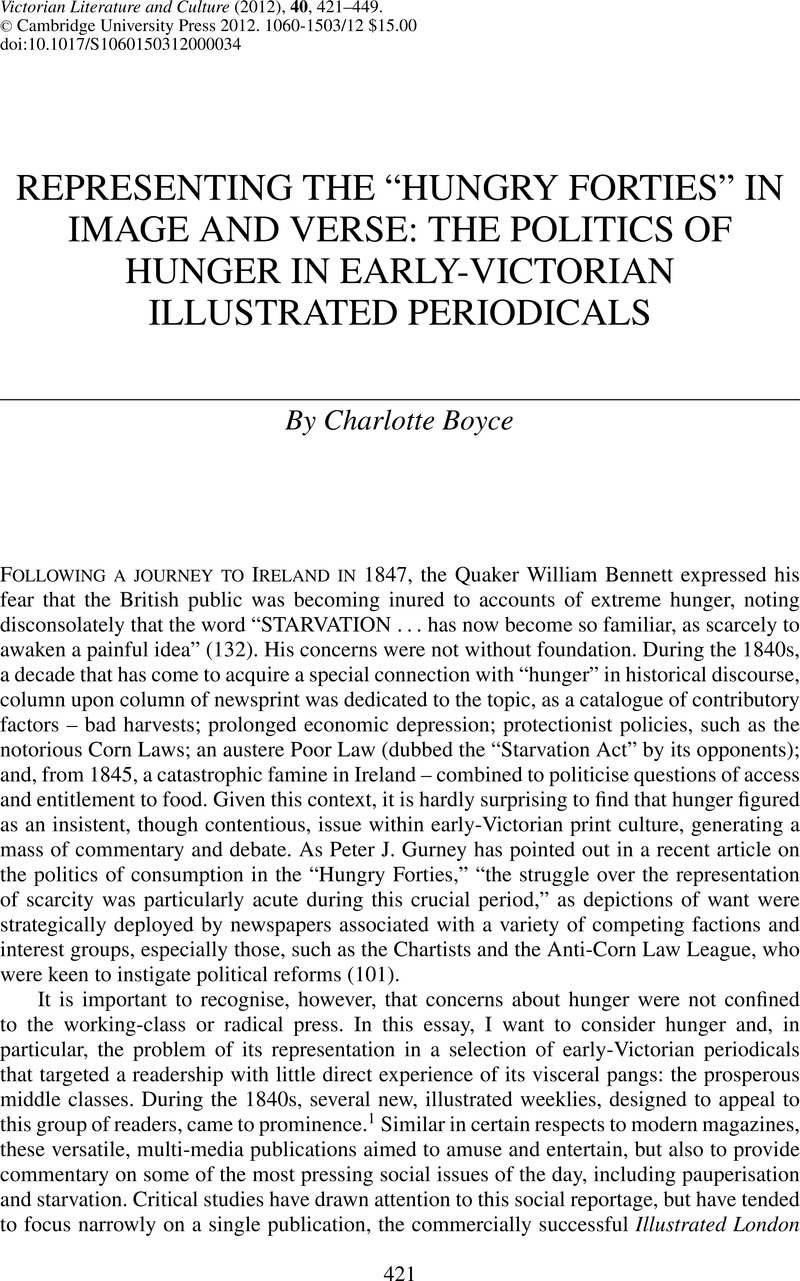Crossref Citations
This article has been cited by the following publications. This list is generated based on data provided by Crossref.
Garrisi, Diana
2017.
The Victorian press coverage of the 1842 report on child labour. The metamorphosis of images.
Early Popular Visual Culture,
Vol. 15,
Issue. 4,
p.
442.
Schulz, Maren
2018.
Famines During the ʻLittle Ice Ageʼ (1300-1800).
p.
231.
Taylor-Brown, Emilie
2018.
Gut Feeling and Digestive Health in Nineteenth-Century Literature, History and Culture.
p.
109.
Jovanovski, Natalie
2021.
The Palgrave Handbook of the History of Human Sciences.
p.
1.
Jovanovski, Natalie
2022.
The Palgrave Handbook of the History of Human Sciences.
p.
1877.
Li, Yao
2024.
Dawn of Britain: A New Interpretation of “Dawn” in Martineau’s
Dawn Island
.
The Explicator,
p.
1.



